No products in the cart.
We deliver to
🇺🇸 USA · 🇨🇦 Canada · 🇮🇹 Italy · 🇵🇱 Poland · 🇮🇪 Ireland ·
🇬🇧 United Kingdom · 🇳🇿 New Zealand · 🇯🇵 Japan · 🇨🇭 Switzerland ·
🇮🇱 Israel · 🇲🇽 Mexico · 🇦🇺 Australia · 🇨🇿 Czechia · and more
We deliver to
🇺🇸 USA · 🇨🇦 Canada · 🇮🇹 Italy · 🇵🇱 Poland · 🇮🇪 Ireland ·
🇬🇧 United Kingdom · 🇳🇿 New Zealand · 🇯🇵 Japan · 🇨🇭 Switzerland ·
🇮🇱 Israel · 🇲🇽 Mexico · 🇦🇺 Australia · 🇨🇿 Czechia · and more
Diclac gel 5% tube 100 g
$23.19

[category_image]
Nalgesin film-coated tablets 275 mg 2 blisters of 10 pcs.
$20.82
Nalgesin relieves pain, inflammation, and fever. Effective for headaches, toothache, menstrual cramps, musculoskeletal pain, and rheumatic disorders.
Category: Gastrointestinal tract and liver
Brand: KRKA
Pharmacological properties
Nalgesin is an NSAID that has analgesic, anti-inflammatory and antipyretic effects. The mechanism of action of the drug is due to the inhibition of COX, an enzyme involved in the synthesis of prostaglandins. As a result, the levels of prostaglandins in various fluids and tissues of the body decrease.
After oral administration, it is rapidly absorbed in the digestive tract. C max in blood plasma is reached 1-2 hours after administration and increases in proportion to the increase in the dose of the drug. The concentration of naproxen in plasma increases in proportion to the increase in the dose. About 99.5% of naproxen binds to blood plasma albumin at a drug concentration of up to 50 μg/ml. Approximately 70% of naproxen is excreted unchanged and approximately 30% – in the form of the inactive metabolite 6-dimethyl-naproxen. Approximately 95% of the drug is excreted in the urine, about 5% – in the feces. T ½ does not depend on the dose and concentration in blood plasma and is 12-15 hours.
Indication
Headache and toothache, migraine, menstrual pain; muscle, joint and spine pain (musculoskeletal disorders); muscle and joint pain with colds and flu, rheumatoid diseases (rheumatoid arthritis, osteoarthritis, ankylosing spondylitis and gout).
Application
In adults and children over 16 years of age.
The tablets should be swallowed whole with a glass of water.
Treatment should be started with the minimum recommended dose, especially in elderly patients.
Toothache, headache and musculoskeletal disorders. The recommended dose is 2 tablets (550 mg) 2 times a day, not more than 4 tablets (1100 mg) per day. Only in case of severe pain (except for musculoskeletal disorders) it is possible to use up to 5 tablets (1375 mg) per day.
Migraine. The recommended dose is 3 tablets (825 mg) at the first sign of an attack. If necessary, 1 tablet (275 mg) or 2 tablets (550 mg) can be taken during the day, but not earlier than half an hour after taking the initial dose. The total dose should not exceed 5 tablets (one thousand three hundred seventy-five mg) per day.
Menstrual pain. The initial recommended dose is 2 tablets (550 mg). Then, if necessary, take 1 tablet (275 mg) every 6-8 hours. The maximum dose on the first day of treatment is 5 tablets (1375 mg) and 4 tablets (1100 mg) – on the following days.
In the case of an acute attack of gout, the initial dose is 825 mg (1.5 tablets), then 275 mg (half a tablet) every 8 hours until the attacks stop and until the daily dose does not exceed 1375 mg.
The initial dose for rheumatic diseases (rheumatoid arthritis, osteoarthritis, ankylosing spondylitis) ranges from 550 to 1100 mg and is divided into morning and evening doses. For patients with severe pain at night or with morning stiffness, for patients who are replacing high doses of other anti-inflammatory drugs with naproxen, and for patients with osteoarthritis when pain is the main symptom, the initial daily dose should be 825-1375 mg. Treatment should be continued with daily doses of 550-1100 mg, divided into 2 doses. The morning and evening doses should not be the same; they should be adjusted according to the predominant symptoms, namely: pain at night or morning stiffness. For some patients, a single daily dose in the morning or evening is sufficient.
Elderly patients. Patients over 65 years of age should take tablets only every 12 hours if necessary.
Dosage for patients with impaired renal or hepatic function: Lower doses should be prescribed for patients with impaired renal or hepatic function.
The drug is contraindicated in patients with severe renal impairment (creatinine clearance less than 30 ml/min) or during dialysis due to the accumulation of naproxen metabolites in such patients.
Contraindication
Hypersensitivity to naproxen sodium or any of the excipients.
Hypersensitivity to salicylates and other nonsteroidal anti-inflammatory drugs, manifested as asthma, urticaria, and nasal polyps.
Acute period or recurrence of gastric or duodenal ulcer, bleeding in the gastrointestinal tract.
Severe liver and kidney dysfunction (creatinine clearance 30 ml/min).
Heart failure.
Pregnancy and breastfeeding.
Age up to 16 years.
Side effects
Side effects are most often associated with taking high doses.
From the side of the hematopoietic and lymphatic systems: eosinophilia, granulocytopenia, leukopenia, thrombocytopenia, aplastic anemia, hemolytic anemia.
Immune system disorders: hypersensitivity reactions, anaphylactic reactions.
Nervous system: headache, vertigo, dizziness, drowsiness, depression, sleep disturbances, inability to concentrate, insomnia, weakness, aseptic meningitis, cognitive disorders.
Psychiatric: convulsions, abnormal dreams.
From the side of the organs of hearing and labyrinth: tinnitus, hearing impairment, hearing impairment.
On the part of the organ of vision: visual impairment, corneal opacity, papillitis, retrobulbar neuritis, swelling of the optic nerve papilla.
Cardiac: edema, palpitations, congestive heart failure.
Vascular disorders: vasculitis.
Respiratory, thoracic and mediastinal disorders: dyspnea, eosinophilic pneumonia, agranulocytosis, asthma, pulmonary edema.
Metabolism and nutrition disorders: hyperglycemia, hypoglycemia.
From the gastrointestinal tract: constipation, abdominal pain, nausea, dyspepsia, diarrhea, stomatitis, ulcerative stomatitis, formation of gastrointestinal ulcers, gastrointestinal bleeding and / or gastric perforation, vomiting, vomiting with blood, melena, esophagitis, pancreatitis, colitis.
Liver and biliary tract: increased liver enzymes, jaundice, hepatitis.
Skin and subcutaneous tissue disorders: pruritus, skin rash, bruising, purpura, alopecia, photosensitive dermatitis, erythema nodosum, lichen planus, pustules, systemic lupus erythematosus, epidermal necrolysis, erythema multiforme, photosensitivity reactions similar to chronic hematoporphyria and bullous epidermolysis, Stevens-Johnson syndrome, urticaria.
Musculoskeletal and connective tissue disorders: muscle pain and muscle weakness.
Renal and urinary disorders: glomerulonephritis, hematuria, interstitial nephritis, nephrotic syndrome, renal dysfunction, renal failure, renal papillary necrosis.
From the reproductive organs and mammary glands: infertility in women.
General disorders: thirst, increased sweating, menstrual irregularities, hyperthermia (chills and fever), angioedema.
Impact on laboratory and instrumental test results: hyperkalemia, increased creatinine levels.
Edema, hypertension, and heart failure have been reported in association with the use of nonsteroidal anti-inflammatory drugs.
Based on clinical studies and epidemiological data, it is suggested that an increased risk of arterial thrombosis (e.g. myocardial infarction or stroke) may be associated with the use of some NSAIDs (especially at high doses and for long periods).
If severe adverse reactions occur, treatment should be discontinued.
Special instructions
In order to reduce the likelihood of side effects, the drug should be used in the minimum effective dose and for the shortest possible period. In case of prolonged use, constant monitoring is necessary to detect adverse reactions. Since cases of gastrointestinal bleeding have been noted with the use of naproxen, it should be used with special caution in patients with a history of gastrointestinal diseases. Serious adverse reactions from the gastrointestinal tract have been observed with the use of NSAIDs. The risk of developing these reactions does not depend on the duration of treatment. Elderly and debilitated patients are more prone to the formation of gastrointestinal ulcers, bleeding and the development of serious adverse reactions. The anti-inflammatory and antipyretic effect of the drug may mask the manifestations of diseases and complicate their diagnosis. In persons with a history of BA, allergic diseases or cases of bronchospasm, bronchospasm may develop. Abnormalities in laboratory tests of liver function may be recorded. Naproxen reduces platelet aggregation and prolongs bleeding time. This must be taken into account when determining bleeding time. When using naproxen, slight peripheral edema is possible, the risk of its development is high in patients with impaired cardiac function. Patients with blood clotting disorders who use drugs that affect hemostasis require more careful monitoring. In the case of simultaneous use of anticoagulants, the risk of bleeding increases. In the presence of an infectious disease, the anti-inflammatory and antipyretic effects of naproxen should be taken into account, as they can mask the signs of these diseases.
Naproxen should be administered with great caution to patients with impaired renal function. In patients with renal insufficiency, creatinine clearance should be determined and monitored during treatment. Naproxen is not recommended if creatinine clearance is 30 ml/min.
Anaphylactoid (anaphylactic) reactions may occur in individuals with or without a history of hypersensitivity reactions to acetylsalicylic acid, other NSAIDs, or naproxen-containing products. Patients with a history of angioedema, bronchospasm, asthma, rhinitis, and nasal polyps may also develop anaphylactoid reactions. Some of these reactions, such as anaphylactic shock, may be fatal.
When reducing or discontinuing NSAIDs during naproxen therapy, their dose should be reduced gradually and under medical supervision to detect any adverse reactions, including adrenal insufficiency and exacerbation of arthritis symptoms.
Ophthalmological disorders, including papillitis, retrobulbar neuritis, and papilledema, have been reported rarely with NSAIDs, including naproxen, although a causal relationship has not been established. Therefore, patients who develop visual disturbances while taking naproxen should have an ophthalmological examination.
Before starting treatment with naproxen, it is necessary to establish (consultation with a doctor) the presence in the patient’s medical history of hypertension and / or heart failure with fluid retention and edema associated with the use of non-steroidal anti-inflammatory drugs. Based on clinical studies and epidemiological data, it is assumed that an increased risk of arterial thrombosis may be associated with the use of some NSAIDs (especially in high doses and for a long time). According to these data, the use of naproxen (1000 mg / day) is associated with lower risks, but some risks cannot be excluded.
The need for naproxen should be carefully considered in patients with uncontrolled hypertension, congestive heart failure, coronary artery disease, peripheral arterial disease, and/or cerebrovascular disease. For individuals with risk factors for cardiovascular events (e.g., hypertension, hyperlipidemia, diabetes mellitus, smoking), the need for naproxen should also be carefully evaluated before initiating long-term therapy.
Naproxen, like other COX inhibitors, may affect fertility. Women planning pregnancy and/or having difficulty conceiving should discontinue naproxen.
Use with caution in patients with impaired liver function. In chronic alcoholic cirrhosis of the liver and other forms of cirrhosis, the total concentration of naproxen in the blood plasma decreases, and the concentration of unbound naproxen in the blood plasma increases.
Patients with epilepsy or porphyria who take naproxen should be carefully monitored.
Concomitant use with acetylsalicylic acid and other NSAIDs is not recommended due to an increased risk of side effects.
Elderly patients should take naproxen at the lowest effective dose.
Important information about some of the ingredients of Nalgesin and Nalgesin forte. Nalgesin contains 1.09 mmol (25.097 mg) of sodium per dose, Nalgesin Forte contains 2.18 mmol (50.16 mg) of sodium per dose. This should be taken into account by patients on a salt-free diet.
Use during pregnancy and breastfeeding. Not prescribed during pregnancy and breastfeeding.
Ability to influence the reaction rate when driving or operating other mechanisms. While using the drug, some patients may experience drowsiness, dizziness, visual disturbances, insomnia or depression. In case of the development of the above side effects, patients should refrain from driving or operating complex mechanisms.
Children. Nalgesin is used in children over the age of 16. Nalgesin forte is used only in adults.
Interactions
The simultaneous use of acetylsalicylic acid and other nonsteroidal anti-inflammatory drugs is not recommended due to the high risk of adverse reactions.
Concomitant use with antacids or cholestyramine may slow the absorption of naproxen.
Concomitant use with cardiac glycosides may lead to exacerbation of heart failure, a decrease in glomerular filtration rate and an increase in the level of cardiac glycosides in the blood.
Naproxen should not be used within 8-12 days after using mifepristone due to its ability to reduce the severity of the effects of the latter.
Caution should be exercised when using naproxen with corticosteroids due to the increased risk of gastrointestinal ulcers and bleeding.
Naproxen sodium may reduce platelet aggregation and prolong bleeding time, this should be taken into account when determining bleeding time and during concomitant treatment with anticoagulants.
Animal studies suggest the possibility of convulsions caused by quinolone antibiotics. Patients taking quinolones are at increased risk of developing convulsions.
Since naproxen is almost completely bound to plasma proteins, it should be used with caution when administered concomitantly with hydantoin derivatives and sulfonylurea derivatives.
Naproxen may reduce the severity of the natriuretic effect of furosemide.
Naproxen may reduce the hypotensive effects of antihypertensive agents.
With simultaneous administration of lithium and naproxen sodium, the concentration of lithium in the blood plasma increases.
Naproxen, like other NSAIDs, may reduce the antihypertensive effect of propranolol and other β-adrenergic blockers and may increase the risk of renal failure in patients taking ACE inhibitors concomitantly.
Naproxen reduces the tubular secretion of methotrexate, so its toxicity may increase with parallel administration of methotrexate.
With simultaneous use of probenecid, T½ of naproxen increases and its concentration in blood plasma increases.
Concomitant use of cyclosporine may increase the risk of renal impairment.
In vitro studies have shown that concomitant administration of naproxen sodium and zidovudine increases the concentration of the latter in blood plasma.
Overdose
After accidental or intentional ingestion of a large amount of the drug, abdominal pain, nausea, vomiting, dizziness, tinnitus, irritability may occur, and in more severe cases, bloody vomiting, melena, impaired consciousness, respiratory disorders, convulsions, and renal failure. Gastric lavage, administration of activated charcoal, antacids, H2-receptor inhibitors, proton pump inhibitors, misoprostol, etc. are indicated.
Storage conditions
At a temperature not exceeding 25 °C.
Be the first to review “Nalgesin film-coated tablets 275 mg 2 blisters of 10 pcs.” Cancel reply
You may also like


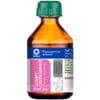


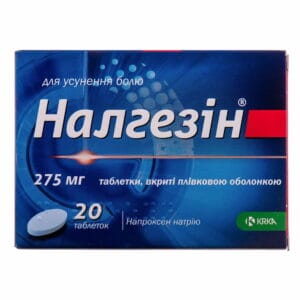

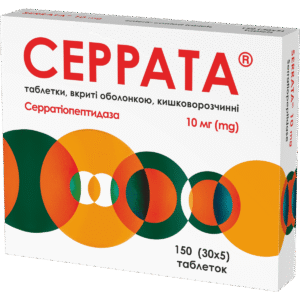
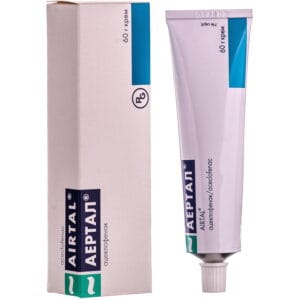
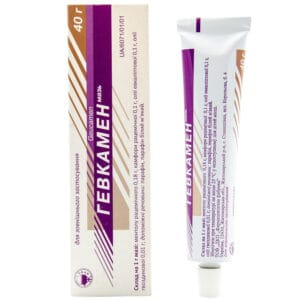
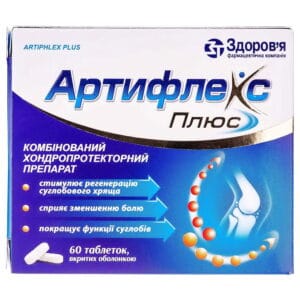
Reviews
There are no reviews yet.